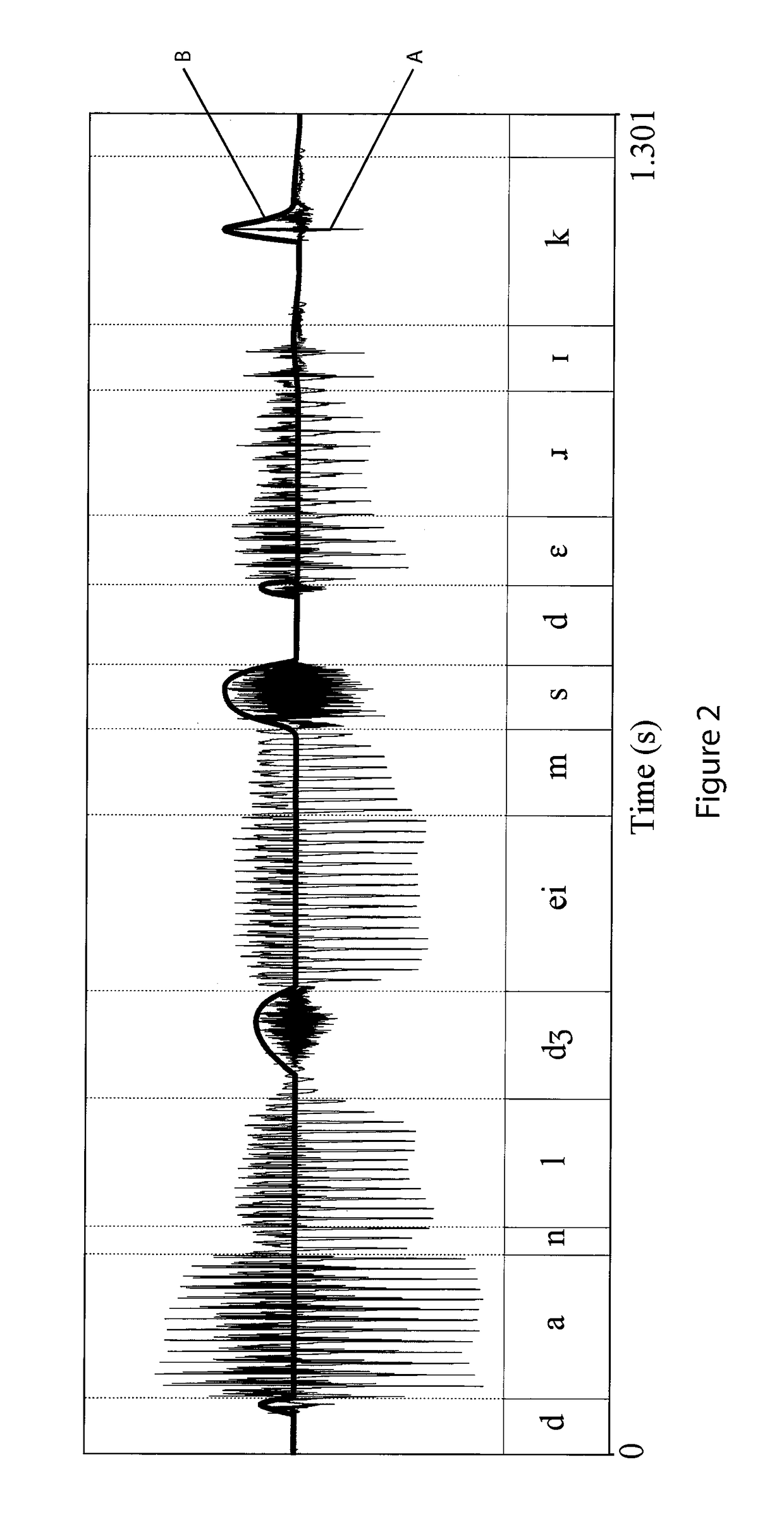System for audio analysis and perception enhancement
- Summary
- Abstract
- Description
- Claims
- Application Information
AI Technical Summary
Benefits of technology
Problems solved by technology
Method used
Image
Examples
example 1
sing Rate Technique
[0132]Hissing-type utterances (unvoiced) exhibit a wide spectrum. On the other hand, utterances with a strong fundamental and associated harmonics exhibit a much more periodical appearances and therefore a spectrum with more clearly identifiable peaks. Although a periodicity computation could be used to identify voiced utterances from unvoiced utterances, this computation is very computationally intensive and exhibits limited performance for the computational cost involved.
[0133]FIG. 4 shows a system 300 for generating a control signal to an aero-tactile device. Unless otherwise described, features described with reference to FIG. 4 have similar or identical functionality as corresponding features described with reference to FIG. 3 indicated by like reference numerals with the addition of 100.
[0134]The system 300 implements a simple approach with usable performance under controlled conditions, by measuring the number of zero crossings of the input acoustic signal ...
example 2
Energy / Discrete Energy Separation Technique
[0142]As the zero-crossing rate method showed much room for improvement, a better method was sought while still keeping in mind the need to operate on limited hardware.
[0143]Just as the zero-crossing method was based on a physical aspect of the signal, the method using Teager's energy and discrete energy separation takes this reasoning one step further and seeks to use knowledge of the processes by which speech is generated.
[0144]It is a fact of physics that, to generate two signals of equal amplitude, it takes more energy to generate a high-frequency signal than a low-frequency one. Unvoiced utterances are basically wide-band noise (although more correlated than noise), meaning that much energy went into their creation. In voiced utterances, most energy is bundled in a, comparatively, low-frequency fundamental. Thus, a method that assigns a different energy to each frequency band based upon the physical processes by which the frequencies a...
example 3
on of Zero-Crossing Rate, Teager's Energy, and Discrete Energy Separation Techniques
[0146]FIG. 5 shows a system 400 that combines the zero-crossing rate and Teager's energy techniques described above to improve the overall performance. Unless otherwise described, features described with reference to FIG. 5 have similar or identical functionality as corresponding features with reference to FIG. 3 indicated by like reference numerals with the addition of 200.
[0147]The functional blocks of the system 400 have many interactions with each other. The system 400 primarily adopts a heuristic approach, with signals from the classification module 440 being used as feedback signals to the feature extraction post-processing module 430 to be used as noise gating functions to improve the algorithm's performance.
[0148]The system 400 comprises a feature extraction module 420 for obtaining signal features relevant to indicating candidate unvoiced portions in the acoustic signal received from an acou...
PUM
 Login to View More
Login to View More Abstract
Description
Claims
Application Information
 Login to View More
Login to View More - R&D
- Intellectual Property
- Life Sciences
- Materials
- Tech Scout
- Unparalleled Data Quality
- Higher Quality Content
- 60% Fewer Hallucinations
Browse by: Latest US Patents, China's latest patents, Technical Efficacy Thesaurus, Application Domain, Technology Topic, Popular Technical Reports.
© 2025 PatSnap. All rights reserved.Legal|Privacy policy|Modern Slavery Act Transparency Statement|Sitemap|About US| Contact US: help@patsnap.com



